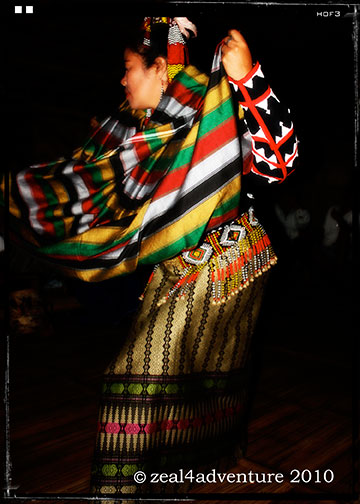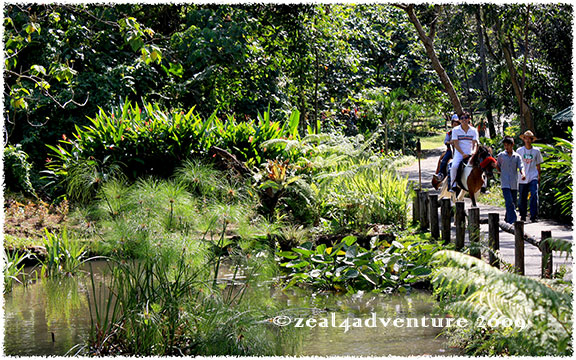You should try Whitewater Rafting at least once in your life.
 Credits: Bannerwoman Designs Worn, Folded Edges, Judy Meibusch Doodle Dot elements, LivEdesigns SSunFun Alpha
Credits: Bannerwoman Designs Worn, Folded Edges, Judy Meibusch Doodle Dot elements, LivEdesigns SSunFun Alpha
Ever since my first rafting experience in 1999, I was hooked (see here, here and here). I can’t count the number of times I’ve rafted the Chico, after all as they say, you never run the same river twice. And I felt it time to share this exhilarating experience with my team.

So for 3 days in January, we found ourselves in Tuguegarao slaving away, devising strategies for the year

with a little bit of team building on the side.

Then on day 3, we spent an adrenalin-filled day at the Chico River in Kalinga. Here are insights gathered from this experience.
It’s Liberating

When was the last time you’ve tried something at least once in your life? I am one to try almost anything (I say almost because I have yet to convince myself about bungee jumping) at least once. Whitewater rafting may not be for everyone but you’ll never know unless you’ve tried it.

I’ve rafted with many first timers with sedentary lifestyles through the years and as often as not, they at the very least, had a blast and in numerous occasions, a wild side they never knew they had is kindled.
 Anton Carag, charismatic mover and shaker of whitewater rafting since 1998 at the Chico
Anton Carag, charismatic mover and shaker of whitewater rafting since 1998 at the Chico
Many among my team were apprehensive before the run and listened intently to Anton Carag lecturing on proper paddling techniques, what to do when one falls off and how to get back on the raft.

Doing a Hi-Five for a job well done
I saw how their fears transformed to confidence after the first few rapids. They started to have fun.

Some even enjoyed the falls, bringing home stories of how they survived it etc. It also helps to know that two internationally recognized wilderness specialists trained Anton and his team of guides some 10 years ago.
It Fosters Team Spirit

Rafting only works if everyone works as a team. Listen to your leader and follow exactly the commands. If the team fails to act as one, the raft may capsize. If you’re not prepared to drink gallons of water, you probably don’t want this. It’s also a hassle getting back on the raft and if the water’s low, you will most likely be going home with bumps and bruises as a remembrance from the river. But hey, isn’t that proof of that adventurous spirit you thought you never had? So listen to your guide and be in sync with your teammates.
It’s Actually Safe

First of all, the guides (mostly natives of Kalinga) know the river like the back of their hands. And to reiterate, top-notched, seasoned river guides with international experience trained most of them. But in case you didn’t follow instructions or to put it nicely — misunderstood the guide’s instructions and you fall off or worse, the whole raft flips, not to worry because the equipments, most especially the vest you are wearing (I can only speak of AEPI’s as I am not familiar with the other outfitters) is US-certified safe. This means that when you’re under, the vest is buoyant enough to carry you out. Sometimes with a little help from you, but hey again, sometimes you need to work a little harder eh?
It promotes Eco-tourism

And provides jobs. Whitewater rafting is part of the new adventure and eco-tourism that the Philippines have to offer. Most of the guides used are from neighboring communities and the more tourists, more jobs and other business opportunities are not far behind. It also teaches us to respect and appreciate Mother Nature.
It’s Gorgeous Out There

Spectacular views of the Cordillera Mountains coupled with beautiful riverbanks and clear waters (not always the case though) surrounds the whole stretch of the run. Unspoiled. Pristine.

Except for raging rapids that never fails to stir up your adrenalin, the only other sounds you hear are chirpings of birds and the flow of the river. Serenity in a most natural setting.

Excellent Food at Casa Carag
The 6th reason why you should try whitewater rafting with AEPI. The food is just extraordinary.

Nothing is ordinary, from the longganisa, Salinas and hot native chocolate for breakfast, to the local Ibanag dishes such as their pinakbet and inabraw. It’s all good!

So, at the first chance of rain (which is sadly a long way off), book a package with AEPI and experience the ultimate adventure of your life. Season starts in August and ends in February.
* All photos at the river courtesy of AEPI.
Contact Details:
Anton Carag, Jr.
Mobile: (63)917-532-7480
Landline: (6378)844-1298
Email: aepi@whitewater.ph; anton@whitewater.ph; whitewater1ph@yahoo.com









































































 taken at the KK airport – no wonder we can’t find ’em!!
taken at the KK airport – no wonder we can’t find ’em!!






















 This nature park is an alternative to posh urban resorts and is ideal for family excursions, company outing and team building activities. Our recently concluded National Sales Conference had us running around the Eco-park with respective teams in tow racing to the finish line.
This nature park is an alternative to posh urban resorts and is ideal for family excursions, company outing and team building activities. Our recently concluded National Sales Conference had us running around the Eco-park with respective teams in tow racing to the finish line.
